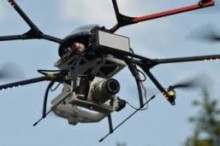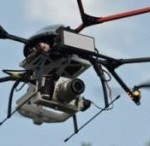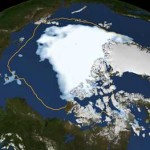Echodyne pursuits Drones, Self-riding automobiles with Metamaterials Radar

Echodyne, a secretive Seattle-house startup firm backed by means of traders together with bill Gates and Paul Allen, is developing a novel, high-efficiency radar suitable for drones, robots, and self-driving automobiles. The technology could probably permit such automobiles to operate independently in a range of stipulations.
the company, housed in a drab, unmarked constructing just off State Route 520 in Bellevue, WA, thinks it will possibly dramatically enhance upon current radar programs in terms of value, size, weight, and performance, through using metamaterials, which Echodyne co-founder and chief expertise officer Tom Driscoll describes as “sub-wave size geometric configurations of steel and circuit board.” (We’ll dive into that in a minute—for now, think tiny structures that can exchange the best way a surface interacts with radio waves.)
Echodyne shall be advertising its expertise to govt and army clients, the standard behemoths of the radar trade. but its co-founders are more fascinated with building a industrial industry serving new markets and purposes that haven’t used radar prior to because it used to be too dear, too heavy, or didn’t offer a meaningful development over existing optical sensing technologies.
“now we have this idea of radar vision, where you’re in fact using radar as a imaginative and prescient gadget for independent and unmanned autos as opposed to an exotic armed forces-grade best sensor,” says co-founder and CEO Eben Frankenberg.
Echodyne is probably the most latest metamaterials company to spin out of mental Ventures, the patent licensing and invention industry co-founded by using former Microsoft chief expertise officer Nathan Myhrvold. mental Ventures accumulated a major metamaterials mental property portfolio and further developed the expertise via its Metamaterials Commercialization middle, which Driscoll directed.
the other corporations are Kymeta, which has raised $ eighty two million to apply metamaterials technology to satellite communications (and Monday introduced a partnership with Airbus security and house interested in the maritime business), and Evolv technology, based in Boston and funded to the tune of $ 12 million to tackle advanced imaging.
“There’s a perception that as a result of [neither] Kymeta, nor Evolv, nor us have launched any real product yet, that each one of metamaterials is being squirreled away in some militia area and no one will ever see it,” Driscoll says. “It’s no longer our intent. we can be partnering with defense force. we will be able to even be making industrial products.”
To display this, Echodyne installed a prototype metamaterials radar antenna—which looks as if a stack of printed circuit boards, in regards to the dimension of a shoebox high—on an off-the-shelf quad copter. It’s capable of lifting slightly more than six kilos, although the prototype unit weighs best about 2.6 kilos. the corporate modified the flight controls so that the drone could autonomously apply a goal, using the radar antenna to guide it. Frankenberg and Driscoll say the drone—which they confirmed off on a conference table, but did not allow me to photograph—followed them round a field.
“We gave a tiny quad copter the power to see and picture the world around it with radar,” Driscoll says, calling it a primary for a radar machine in a position to scanning for brand new objects whereas tracking current ones—capabilities prior to now restricted to excessive-finish electronically scanning radars.
“You couldn’t even raise any one else’s electronically scanning radar with this [quad copter] at virtually any price,” Frankenberg says.
to explain why Echodyne believes it will probably upend the established order, Frankenberg and Driscoll laid out the constraints of present radar technologies—and the advantages of metamaterials.
Radar a hundred and one
Radar, an acronym courting from the Forties for radio detection and ranging, used to be confirmed in rudimentary type at the start of the remaining century. it really works with the aid of sending out a pulse of radio waves, which leap off objects in the way in which. by means of measuring how long it takes the radar sign to come to the radar antenna, which you can decide the presence and position of far-off objects.
In the acquainted mechanically scanned radars, a single beam is transmitted from a rotating antenna to notice objects in a large house. That’s the primary technology to be had for commercial applications today, Frankenberg says. Entry-degree models for boats cost in the low lots of dollars.
more up to date radars direct the beam the usage of section shifters at each antenna element to create a radio wave front that travels in a desired course. Frankenberg says the cutting-edge as of late is the lively electronically scanned array, during which many person antenna elements work in live performance, allowing the radar beam to be pointed nearly instantly in any course—and to switch speedy between scanning for brand new objects and tracking present objectives. These high-efficiency techniques start at $ 100,000 and go up into the thousands and thousands of dollars every, he says.
Mechanical radars can simplest accomplish that much, while electronically scanned arrays stay dear on account of the phase-shifters and amplifiers positioned at each and every antenna element. “the one way to drive the associated fee down is to someway make the electronics at the back of each a type of antenna components less expensive, thru quantity, however there was once no physics alternate by any means,” Frankenberg says.
right here’s Echodyne’s big enhance: “With our metamaterials manner,” he says, “we basically exchange the physics of the best way the antenna works. that permits us to make an enormous improvement in cost, size, weight, and power.”
That improvement, Echodyne believes, will … subsequent web page »
(351)

















